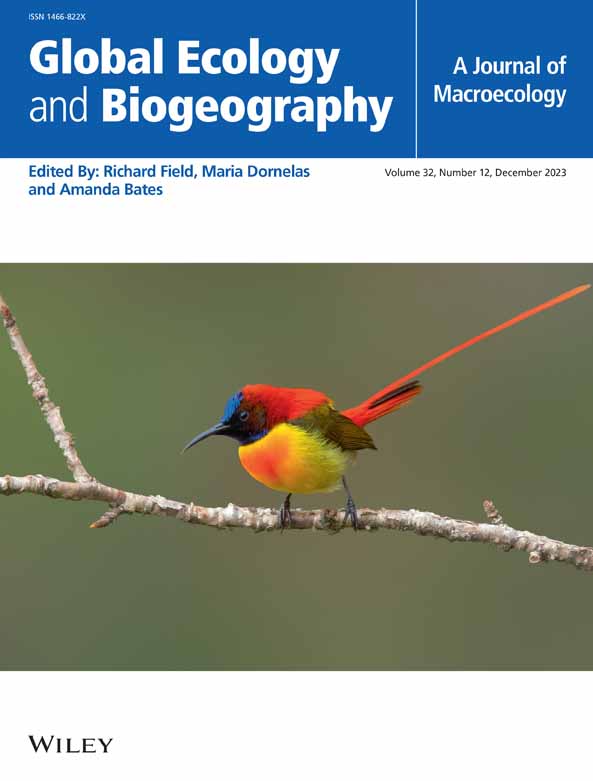Intraindividual Variability as a Large Source of Trait Variation in Clonal Tundra Dwarf Shrubs Along Elevation and Latitude Gradients
Abstract
Aim
Intraindividual trait variability (iITV), which is the variability among repeated architectural units within an individual, may represent a crucial dimension of functional diversity in plant eco-evolutionary dynamics. Although inter- and intraspecific trait variability have been widely studied, the extent of iITV remains largely overlooked. Since iITV might be especially relevant in long-lived clonal plants, we investigated sources of trait variability (species, site, clone, ramet, leaf) in tundra clonal dwarf shrubs, particularly focusing on iITV and its potential drivers.
Location
Europe.
Time Period
July 2019 to September 2020.
Major Taxa Studied
Clonal dwarf shrubs.
Methods
We sampled four widespread boreo-alpine clonal dwarf shrub species (Dryas octopetala, Empetrum hermaphroditum, Vaccinium myrtillus and Vaccinium uliginosum) along elevation gradients in the Pyrenees and along a latitude gradient in Europe. At each site, we selected four clones per species and sampled five ramets per clone. We measured size-architectural traits in each ramet and leaf traits in five leaves per ramet. We quantified interspecific, intraspecific and iITV, investigated the relationship between iITV and both climate and clone structural variables, and compared sampling protocols either accounting for or ignoring iITV.
Results
Although interspecific trait variability was substantial, we found large proportions of iITV within species. Size-architectural traits showed larger iITV (up to 100% of ITV), but leaf traits also showed remarkable values (up to 77%). Our results showed that iITV increased with mean annual temperature for specific leaf area. However, climate and clone structural variables were not predictive for iITV for any other trait.
Conclusions
Our quantification of iITV in clonal dwarf shrubs evidences the importance of this source of variability and its potential ecological implications and emphasises the need to integrate it in sampling protocols, both to avoid bias in comparative studies and improve the predictive capacity of trait-based approaches in population and community ecology.


 求助内容:
求助内容: 应助结果提醒方式:
应助结果提醒方式:


